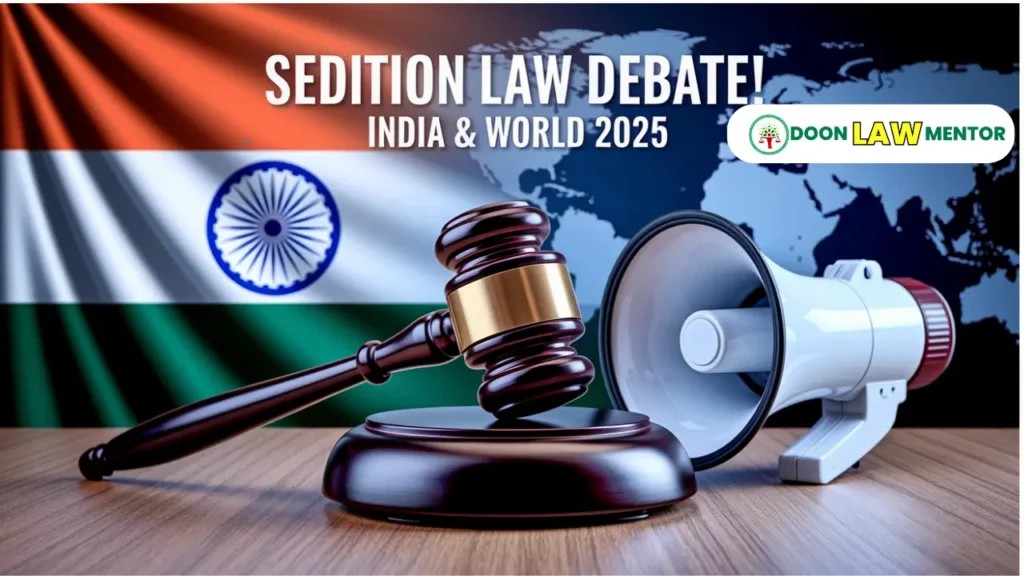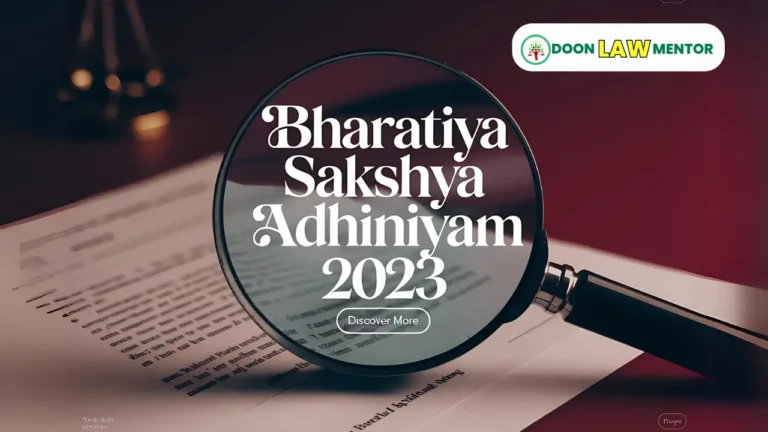The debate on sedition laws in 2025 continues to spark controversy, with India replacing its colonial-era sedition law with Section 150 of the Bharatiya Nyaya Sanhita, focusing on acts endangering sovereignty and unity. Globally, nations like the UK and New Zealand have repealed similar laws, prioritizing free speech. Explore the state of sedition laws in India and worldwide, their impact on democracy, and the ongoing struggle between national security and freedom of expression.
Table of Contents
Introduction
The debate on sedition laws has been a contentious issue for decades, pitting the principles of free speech against the imperatives of national security. In 2025, this debate remains highly relevant, particularly in India, where the colonial-era sedition law under Section 124A of the Indian Penal Code (IPC) was repealed in 2023 and replaced with Section 150 of the Bharatiya Nyaya Sanhita (BNS). This new provision shifts the focus to acts that endanger India’s sovereignty, unity, and integrity, but questions persist about its implications for democracy. Globally, many nations have moved away from such laws, viewing them as relics of colonial oppression that stifle dissent. This blog delves into the state of sedition laws in India as of March 2025, examines global perspectives, and analyzes the broader implications for freedom of expression and democratic values, a critical topic for Judiciary, APO, and JLO aspirants preparing for 2025 exams.
Historical Context of Sedition Laws in India
The sedition law in India, originally enacted in 1870 under Section 124A of the IPC, was a tool of British colonial rule to suppress dissent. It defined sedition as any act that “brings or attempts to bring into hatred or contempt, or excites or attempts to excite disaffection towards the Government established by law in India.” Prominent freedom fighters like Mahatma Gandhi and Bal Gangadhar Tilak were charged under this law for criticizing British policies. Gandhi famously called it the “prince among the political sections of the IPC designed to suppress the liberty of the citizen” during his 1922 trial.
After independence in 1947, the Constituent Assembly debated the relevance of sedition laws. K.M. Munshi, a vocal critic, argued that such laws were a threat to democracy, leading to the omission of the term “sedition” from the Constitution. However, the law was reintroduced through the controversial First Amendment in 1951 under Jawaharlal Nehru, despite his own reservations, to address perceived threats to national stability. The 1962 Kedar Nath Singh vs State of Bihar judgment upheld Section 124A, but with a caveat: it could only be applied to acts with an “intention or tendency to create disorder, or incitement to violence,” aiming to balance free speech under Article 19(1)(a) with public order under Article 19(2).
The State of Sedition Laws in India in 2025
By 2025, India’s sedition law landscape has undergone a significant transformation. In 2023, the Bharatiya Nyaya Sanhita (BNS) repealed Section 124A, replacing it with Section 150, which targets “acts endangering sovereignty, unity, and integrity of India.” This shift, announced by Home Minister Amit Shah in August 2023, aimed to move away from the colonial concept of “rajdroh” (disloyalty to the crown) to “deshdroh” (treason against the nation). Section 150 punishes acts like secession, armed rebellion, or subversive activities with life imprisonment or up to seven years in prison, a harsher penalty than the previous three-year minimum under Section 124A.
The repeal of Section 124A followed years of criticism over its misuse. Between 2014 and 2019, sedition cases surged by 163%, from 47 to 93 annually, according to the National Crime Records Bureau (NCRB), with a conviction rate of just 3%. High-profile cases, such as the arrests of journalist Vinod Dua for criticizing the government’s COVID-19 response and activist Disha Ravi for her role in the 2021 farmers’ protests, highlighted the law’s abuse to silence dissent. In May 2022, the Supreme Court, in S.G. Vombatkere vs Union of India, suspended Section 124A, halting all proceedings and new FIRs until the government reexamined the law, noting its misalignment with India’s “current social milieu.”
However, the introduction of Section 150 has not fully resolved the debate on sedition laws. Critics argue that the new provision, while narrower in scope, still leaves room for misuse due to vague terms like “subversive activities” and “feelings of separatist activities.” For instance, the explanation to Section 150 states that it does not apply to protests against government measures unless they involve secession or armed aggression, but the lack of clarity in defining these terms raises concerns. The Law Commission of India, in its 279th Report in 2023, had controversially recommended retaining Section 124A with harsher penalties, citing national security threats like radicalization via social media, but the government opted for repeal and replacement instead.
Global Perspectives on Sedition Laws in 2025
Globally, the trend in 2025 leans heavily toward abolishing sedition laws, reflecting a broader commitment to freedom of expression. The United Kingdom, which introduced sedition laws to its colonies, repealed its own in 2009 under the Coroners and Justice Act, with then-Justice Minister Claire Ward calling it an “arcane offence” from a time when free speech was not a recognized right. Similarly, New Zealand, Australia, Kenya, and Ghana have scrapped their sedition laws, recognizing them as tools of colonial oppression that stifle dissent in modern democracies.
In the United States, sedition laws exist but are rarely applied, limited to cases involving direct incitement to violence against the government, as seen in the 1918 Sedition Act, which was repealed in 1920. The U.S. Supreme Court has consistently prioritized free speech under the First Amendment, as in Brandenburg v. Ohio (1969), which set a high bar for prosecuting speech—requiring intent, likelihood, and immediacy of lawless action. This contrasts sharply with India’s approach, where even the new Section 150 allows for broader interpretation by authorities.
In contrast, nations with authoritarian tendencies, such as Turkey and Russia, continue to use sedition-like laws to suppress dissent. In Turkey, laws against “insulting the Turkish nation” have been used to jail journalists and activists, while Russia’s 2022 laws criminalizing “discrediting the armed forces” have silenced critics of the Ukraine conflict. These examples highlight a global divide: democracies are moving toward protecting free speech, while authoritarian regimes weaponize such laws to maintain power, a trend that fuels the debate on sedition laws in India.
The Debate: National Security vs. Freedom of Expression
The debate on sedition laws in 2025 centers on the tension between national security and freedom of expression, a conflict rooted in constitutional principles. In India, Article 19(1)(a) guarantees freedom of speech and expression, but Article 19(2) allows “reasonable restrictions” on grounds like public order, security of the state, and sovereignty. Proponents of Section 150 argue that it is necessary to combat secessionist movements, terrorism, and anti-national activities, especially given India’s complex geopolitical challenges, from Kashmir to the Northeast. The Law Commission’s 2023 report emphasized that the rise of social media has amplified radicalization, necessitating strong laws to protect national integrity.
However, critics contend that Section 150, like its predecessor, risks being misused to suppress legitimate dissent. The low conviction rates under Section 124A—only 3% despite hundreds of cases—suggest that the law was often used to harass rather than prosecute, with the process itself becoming the punishment. For example, the 2021 case of three Kashmiri students charged for celebrating Pakistan’s cricket victory over India on social media underscores the law’s overreach. The Supreme Court has repeatedly clarified that criticism of the government does not constitute sedition unless it incites violence, as in Balwant Singh vs State of Punjab (1995), yet law enforcement often ignores these precedents.
Globally, the International Covenant on Civil and Political Rights (ICCPR), which India ratified in 1979, mandates that restrictions on free speech be narrowly drawn and proportionate. India’s sedition laws, even in their new form, arguably violate these standards by allowing broad discretion to authorities. The Human Rights Watch in 2022 called for the complete repeal of Section 124A, arguing that its misuse under the Bharatiya Janata Party (BJP) government targeted activists, journalists, and minorities, a trend that may persist with Section 150.
Implications for Democracy in India
The debate on sedition laws in 2025 has profound implications for India’s democracy, often described as the world’s largest. Dissent and criticism are cornerstones of a vibrant democracy, as K.M. Munshi argued during the Constituent Assembly debates: “The essence of democracy is criticism of the government.” The replacement of Section 124A with Section 150 is a step forward in removing a colonial relic, but its vague language risks perpetuating the same issues. The Supreme Court’s 2022 interim order in S.G. Vombatkere vs Union of India acknowledged that sedition laws were “not in tune with the current social milieu,” a sentiment that remains relevant in 2025.
The debate on sedition laws also intersects with social justice issues. Marginalized communities, including Dalits, Muslims, and tribal groups, have historically borne the brunt of such laws, as seen in cases like the 2019 arrest of Payal Tadvi, a tribal medical student, whose suicide was linked to institutional harassment but led to sedition charges against her peers. The National Task Force Against Student Suicides, formed on March 24, 2025, in Amit Kumar & Ors. vs Union of India & Ors. (2025 SC), highlights the need for a broader approach to student welfare, including addressing systemic discrimination that often fuels dissent—and subsequent misuse of laws like Section 150.
Global Lessons for India
India can learn from global trends in the debate on sedition laws. The UK’s repeal of sedition laws in 2009 was driven by a recognition that free speech is a fundamental right in a modern democracy, a principle echoed by New Zealand and Australia. These nations have replaced sedition laws with targeted counter-terrorism laws, such as the UK’s Terrorism Act 2000, which address national security without broadly infringing on free expression. India already has laws like the Unlawful Activities Prevention Act (UAPA) and the National Security Act (NSA) to tackle terrorism and secessionism, raising questions about the necessity of Section 150.
The U.S. model offers another perspective: its high threshold for prosecuting speech ensures that only direct incitement to violence is actionable, protecting free speech while addressing national security. India could adopt a similar standard, ensuring that Section 150 is applied only in cases of clear and present danger, as defined by the Supreme Court in Kedar Nath.
Challenges and the Way Forward
The debate on sedition laws in 2025 reveals several challenges. First, the vague language of Section 150 risks misuse, as law enforcement may interpret “subversive activities” broadly, continuing the trend of targeting journalists, activists, and students. Second, the low conviction rates under the old law suggest a need for better training of police and magistrates to align with judicial precedents. Third, the debate on sedition laws must address the stigma around mental health and dissent, as highlighted by the National Task Force Against Student Suicides, which links institutional harassment to student distress.
To move forward, India could:
- Clarify Definitions: Amend Section 150 to define terms like “subversive activities” and “separatist feelings” narrowly, ensuring alignment with ICCPR standards.
- Strengthen Judicial Oversight: Empower courts to dismiss frivolous cases early, reducing the “process as punishment” phenomenon.
- Promote Free Speech Education: Raise awareness among citizens and law enforcement about the importance of dissent in a democracy, reducing misuse of laws.
- Leverage Existing Laws: Use UAPA and NSA for national security threats, reserving Section 150 for exceptional cases with clear evidence of violence or disorder.
Relevance for Judiciary Aspirants
For Judiciary, APO, and JLO aspirants preparing for 2025 exams, the debate on sedition laws is a critical topic:
- Prelims: Expect questions on the repeal of Section 124A, the introduction of Section 150, or key cases like S.G. Vombatkere vs Union of India (2022).
- Mains: Discuss the balance between national security and free speech, referencing Article 19(1)(a), Article 19(2), and global perspectives.
- Interviews: Highlight the need for legal reforms to protect dissent while addressing security threats, citing the National Task Force Against Student Suicides as a related social justice issue.
Conclusion
The debate on sedition laws in 2025 reflects a global struggle to balance national security with freedom of expression. In India, the replacement of Section 124A with Section 150 marks progress in shedding colonial legacies, but its vague language risks perpetuating the misuse of sedition laws. Globally, democracies like the UK and New Zealand offer a model for prioritizing free speech, while authoritarian regimes highlight the dangers of such laws. For India, the path forward lies in refining Section 150, strengthening judicial oversight, and fostering a culture that values dissent as a democratic virtue. As the National Task Force Against Student Suicides addresses related issues of institutional harassment, the debate on sedition laws underscores the need for a holistic approach to protect both national integrity and individual rights.
Call-to-Action
Want to stay updated on legal developments like the debate on sedition laws? Join Doon Law Mentor’s Courses for expert guidance. Follow @doonlawmentor on Instagram for the latest updates!
FAQs
- What is the current state of sedition laws in India in 2025?
Section 124A was repealed in 2023, replaced by Section 150 of the Bharatiya Nyaya Sanhita, targeting acts endangering sovereignty, unity, and integrity. - What is Section 150 of the Bharatiya Nyaya Sanhita?
It punishes acts like secession or armed rebellion with life imprisonment or up to seven years, focusing on national security rather than mere criticism. - Why was Section 124A repealed in India?
It was repealed due to widespread misuse, low conviction rates, and its colonial origins, following the Supreme Court’s 2022 suspension in S.G. Vombatkere vs Union of India. - How do global perspectives on sedition laws differ in 2025?
Democracies like the UK and New Zealand have repealed sedition laws, while authoritarian regimes like Turkey use similar laws to suppress dissent. - What is the main argument in the debate on sedition laws?
The debate centers on balancing national security with freedom of expression, with critics arguing that such laws stifle dissent in a democracy. - How does the National Task Force Against Student Suicides relate to sedition laws?
Formed on March 24, 2025, the task force addresses institutional harassment, which often fuels dissent and leads to misuse of laws like Section 150. - What are the penalties under Section 150 in India?
Offenders face life imprisonment or up to seven years in prison, with the possibility of a fine. - How can India improve its sedition laws in 2025?
By clarifying vague terms in Section 150, strengthening judicial oversight, and promoting free speech education among law enforcement. - Why is the debate on sedition laws important for Judiciary aspirants?
It involves key constitutional provisions (Article 19), landmark cases, and social justice issues, making it relevant for prelims, mains, and interviews. - What global laws has India violated with its sedition laws?
The ICCPR, ratified by India in 1979, requires restrictions on free speech to be narrow and proportionate, a standard Section 150 may not fully meet.
#SeditionLawDebate, #FreedomOfSpeech, #India2025, #GlobalPerspectives #bestjudiciarycoaching #bestonlinejudiciarycoaching










